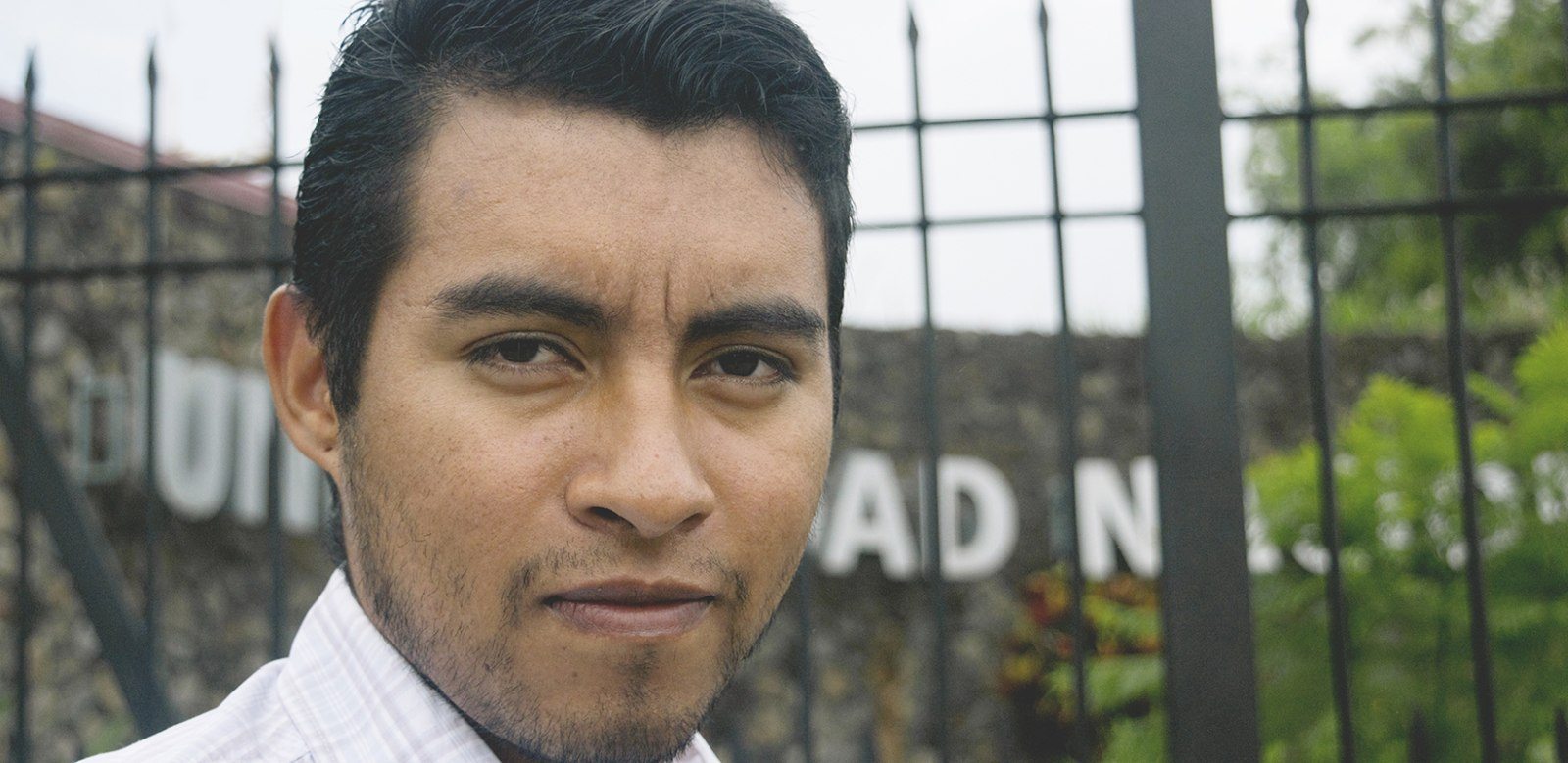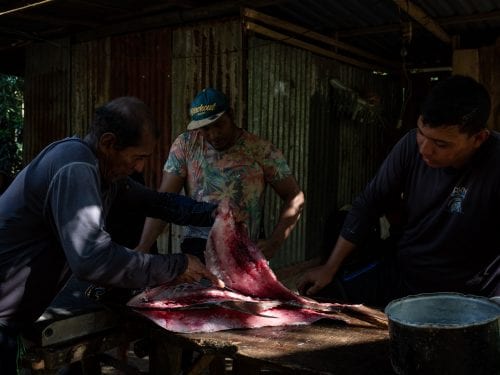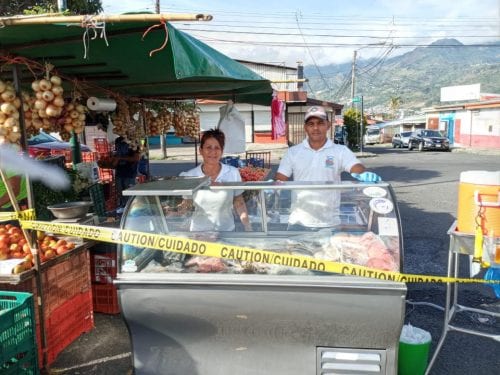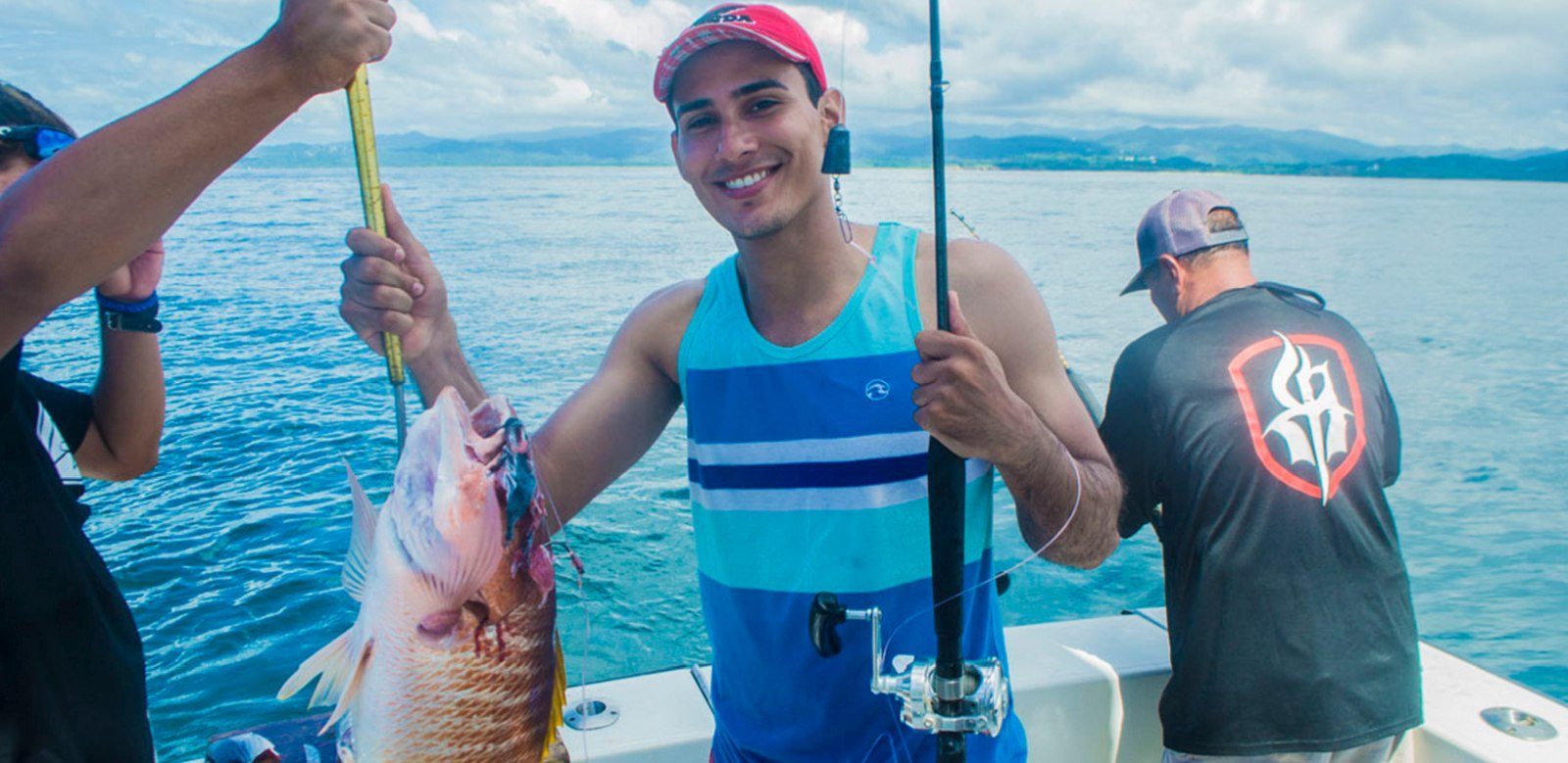
The geographer Olger Vega grew up in Cuajiniquil with his fisherman father, with whom he would go out to explore the ocean when he was a child. Ever since then, he’s wondered how his father always found the best fishing spots.
To him, artisanal fishing was the task of wise men: only a few folks knew the exact spot where the depth was sufficient to hook a big fish that could then be easily sold at a market in San José.
They call the places where one can catch the most fish “bajos,” or low spots, says Olger, dressed in shirtsleeves and ankle-high pants, as he sits at a concrete table at the Universidad Nacional, where he studies.
He says that ever since he was a child he has wanted to discover how to find the secret of “the bajos.” And he did.
A Distant Life
Olger left the pickup soccer games of his neighborhood in Cuajiniquil de La Cruz seven years ago, when he started his studies at the Universidad Nacional (UNA) and moved into an apartment in Heredia with several neighbors that he doesn’t speak to daily.
His life in Heredia was completely different than what he was used to. It was a world where people seemed unsafe in the streets.
“The people here have a different pace of life, so you have to adapt,” he says.
He studied at the public university with the help of the Luis Felipe and Omar Dengo scholarships, but economic issues weren’t his only obstacles. People mocked how he spoke, as the Guanacaste accent is different from the Central Valley one.
The hardest thing, he says, was getting used to the academic system. “They told me, ‘do something and justify it,’ he says, adding that during high school in Cuajiniquil they lacked teachers that taught how to work in groups and on the computer.
He studied sociology during his first year, and he realized that he wouldn’t answer the questions he had since his youth in that discipline. So he started looking into other majors. He found geography.
Investigating His Own Roots
After traveling the mountains and rivers of Costa Rica, Olger started to look for answers about his roots.
He returned to Cuajiniquil to uncover the sense of “mental GPS” that allowed fishermen to find the bajos, the biggest fish, the most promising fish.
During research on artisanal fishing in his town, he asked the oldest fisherman to create mental maps of the best fishing spots. Later, with the help of GPS (Global Positioning Satellite), he marked the spots where the famous bajos were located.
His research revealed a secret: upon finding a good spot, the fishermen used the mountains as a guide to find the spot in the future. They also shared their knowledge with their neighbors, using those mountains as reference points.
“The longest-standing fishermen have a great relationship with their surroundings. In order to position themselves in a fishing spot, they look to the mountains,” he explains about his research, Marina/Coastal Positioning of Artisanal Fishermen in Cuajiniquil, La Cruz, Guanacaste Province, Costa Rica.
He presented his research results at the Latin American Meeting of Geographers (in Spanish, EGAL) in Cuba.
The Homeland
First and foremost, Olger is a proud Guanacastecan. Unlike many who study and remain in the Central Valley, his professional interests are in Guanacaste.
“I’m very connected to Guanacastecan culture. A lot of people leave and then don’t even consider themselves Guanacastecan. That is a problem because it’s like turning your back on your own mother,” he says with outrage.
“Many leave because there isn’t any work, even with all these natural resources,” he adds.
His plan is to continue discovering Guanacaste through research.
“I’m interested in how people work,” he explains. Olger thinks that, if nobody does it, if nobody makes decisions that benefit the people, “others” will arrive and do what they wish with the land.
His next step is to investigate the perceptions that residents of the central district of La Cruz have about the region.
He hopes that with the help of professionals from Guanacaste, the province can develop its own community rural tourism instead of the model of attracting foreign investment. He wants to be part of this change.








Comments